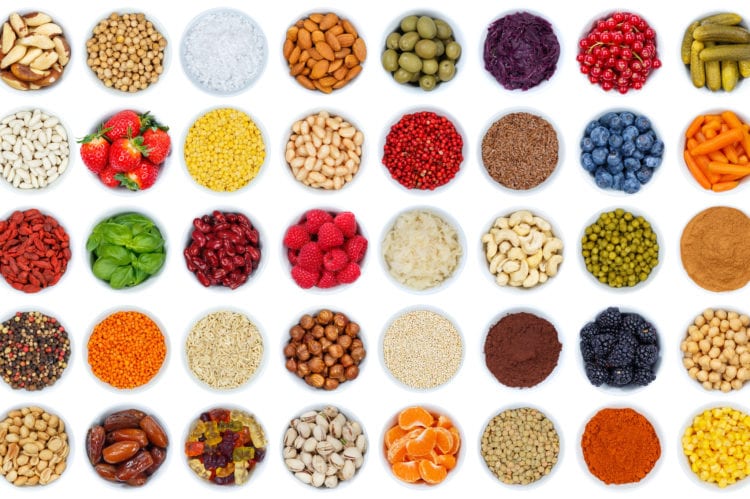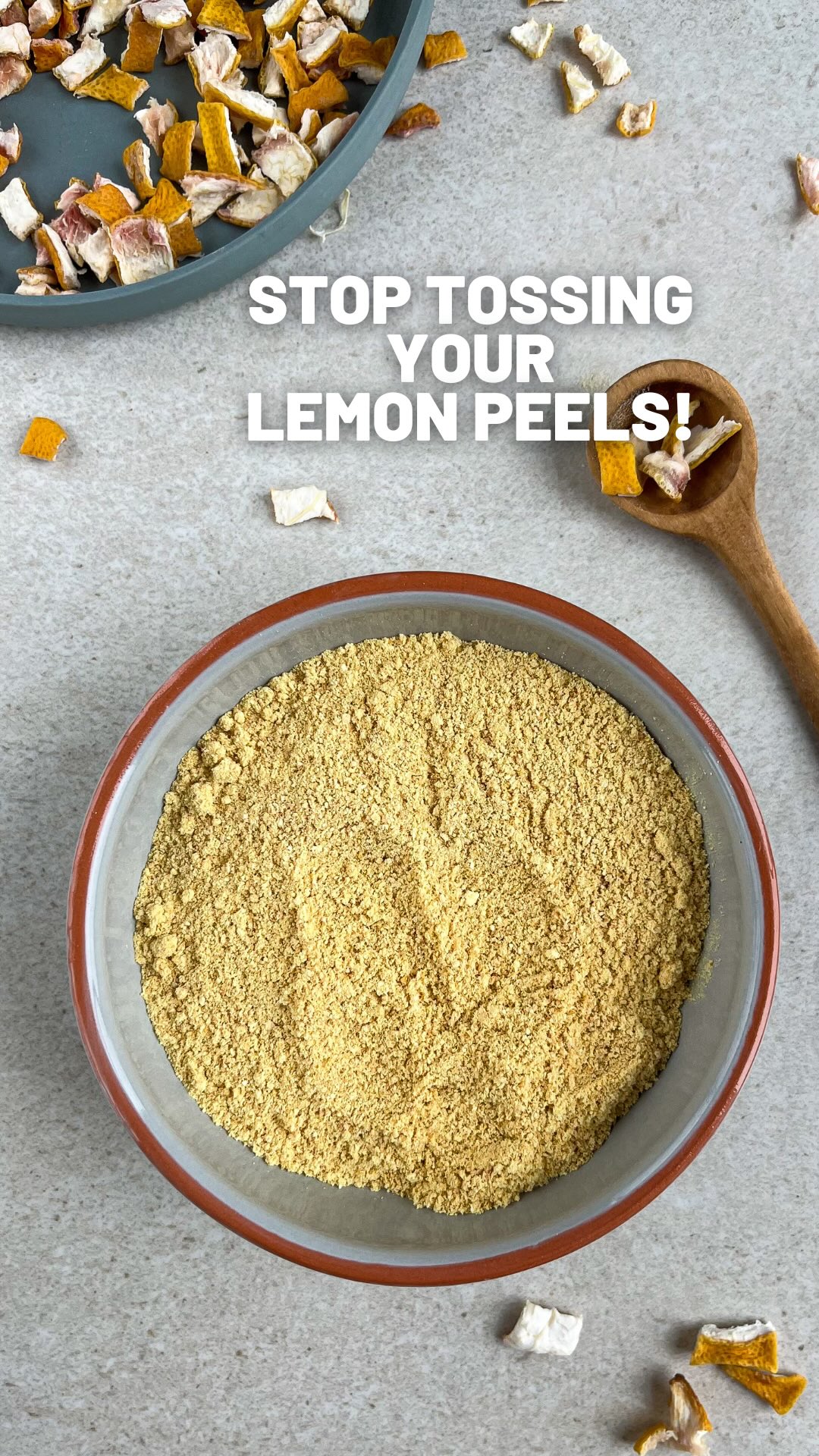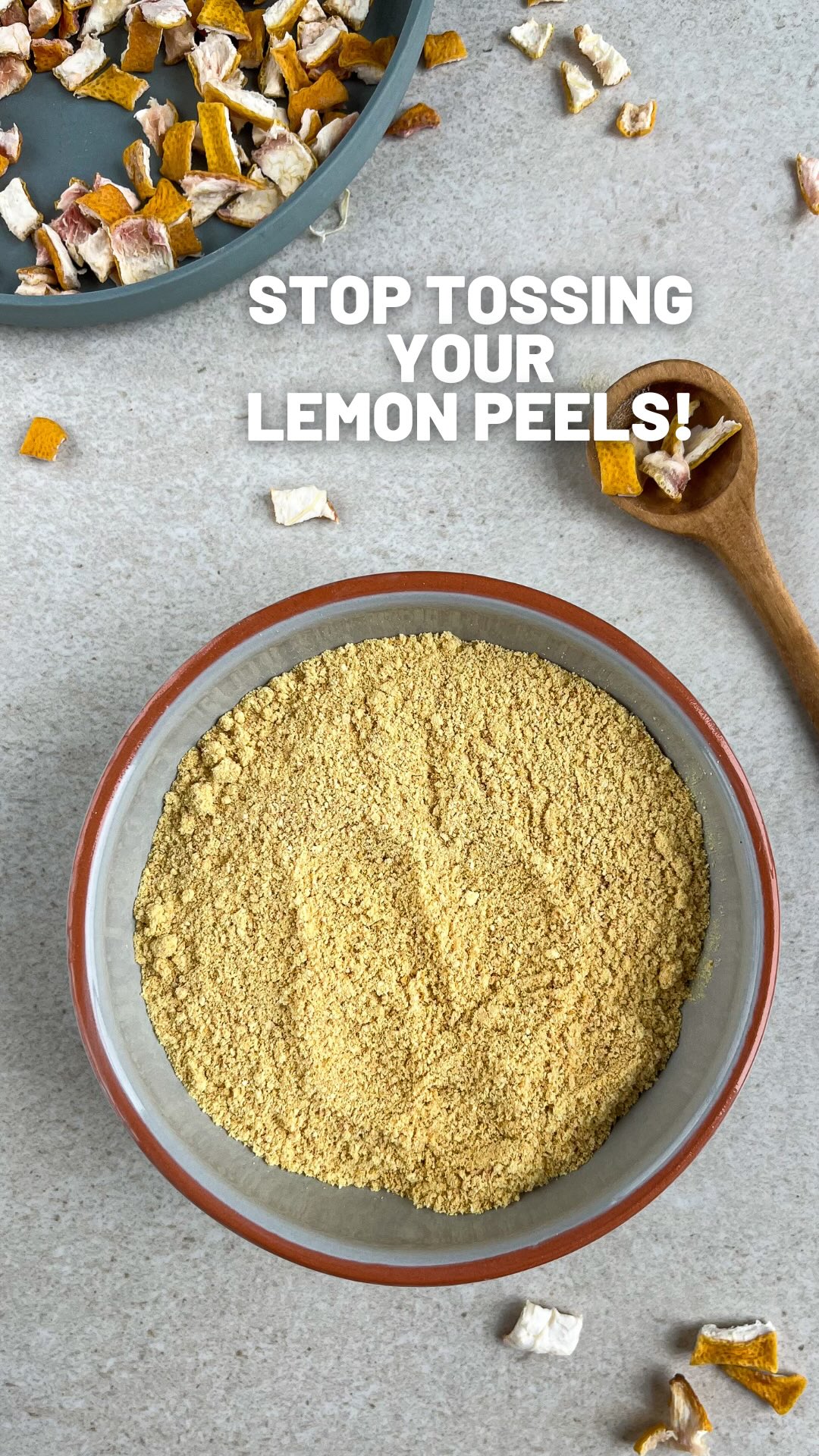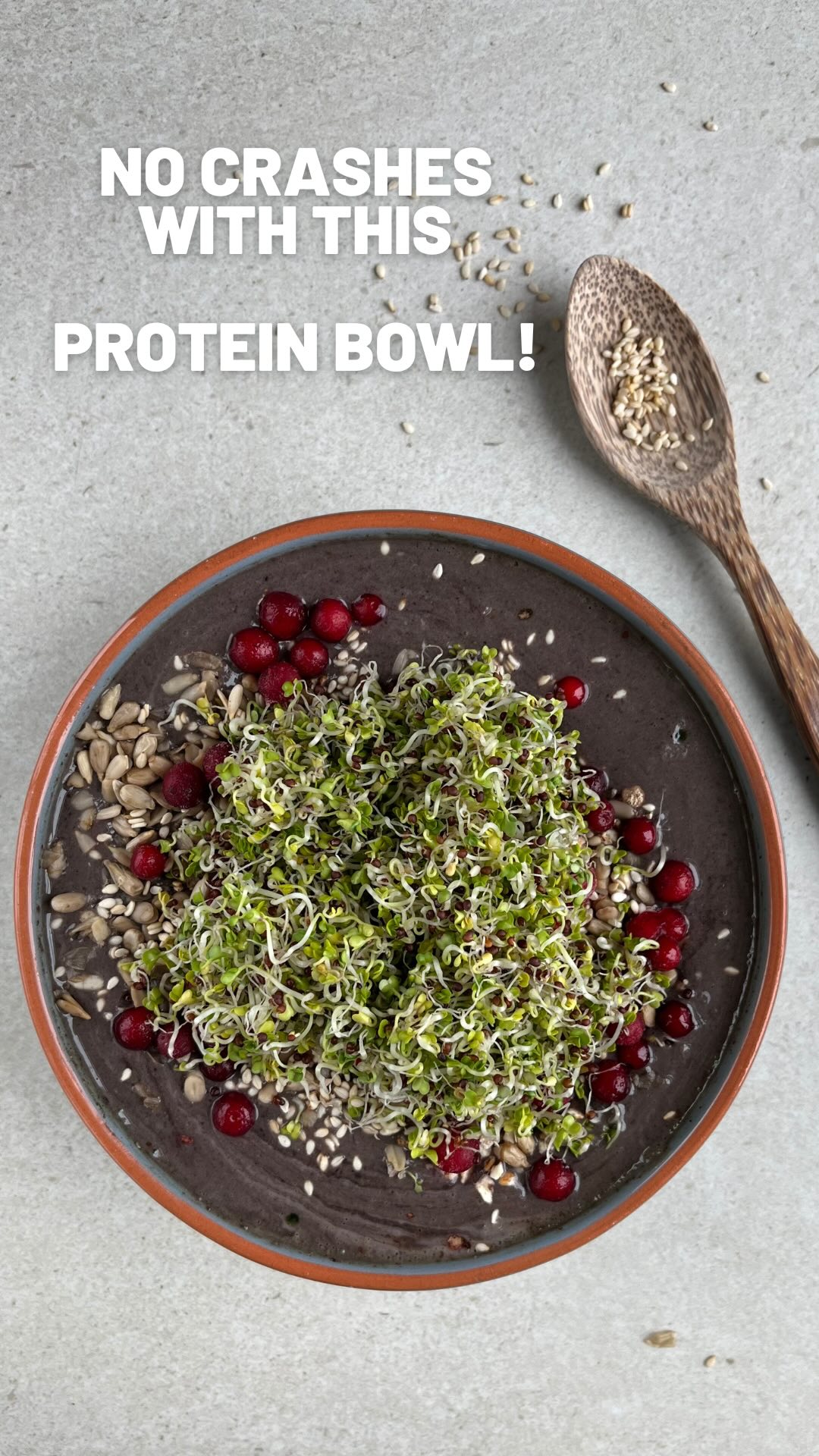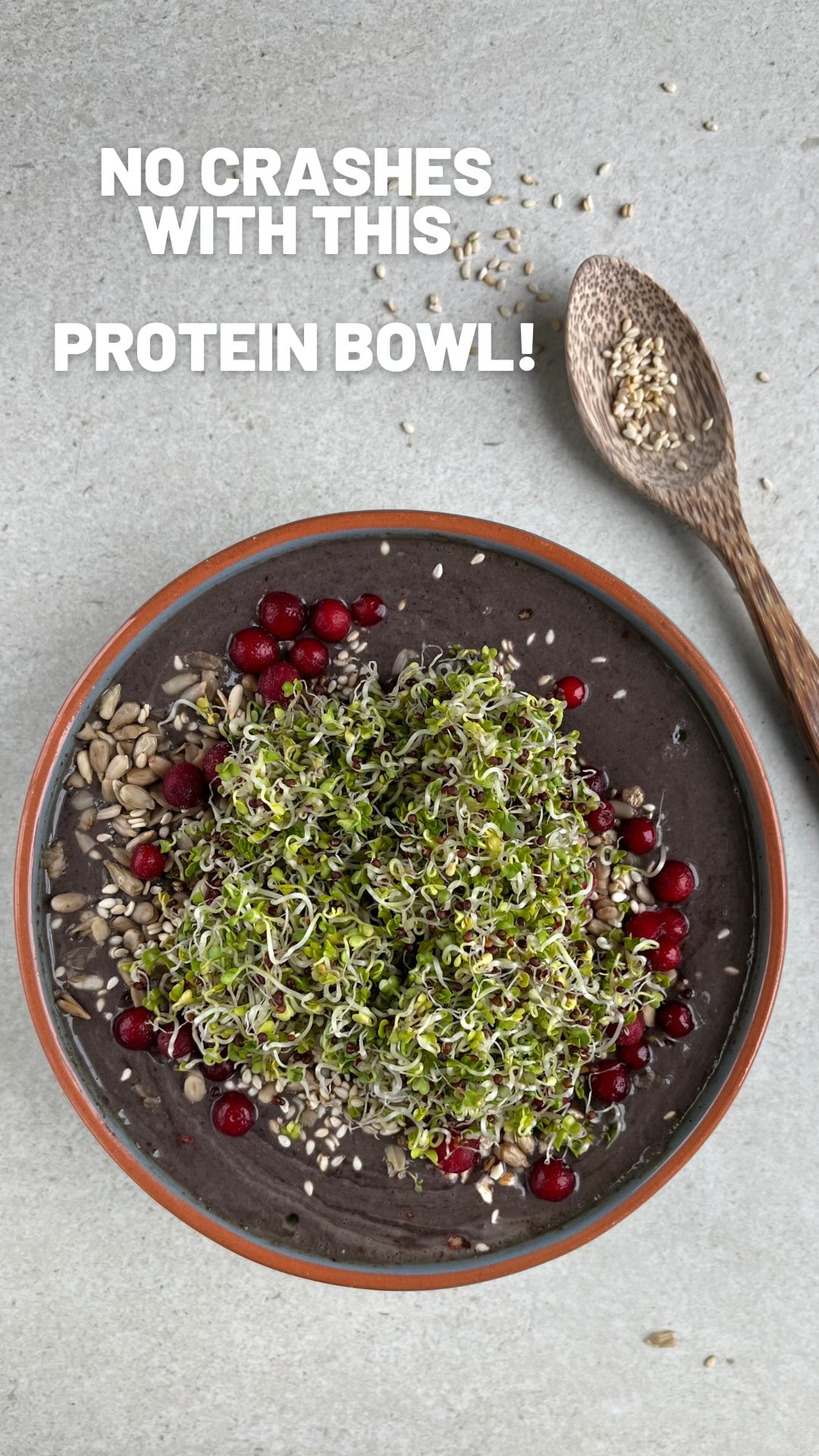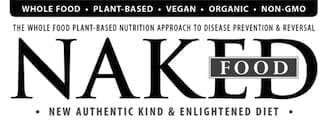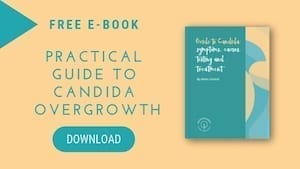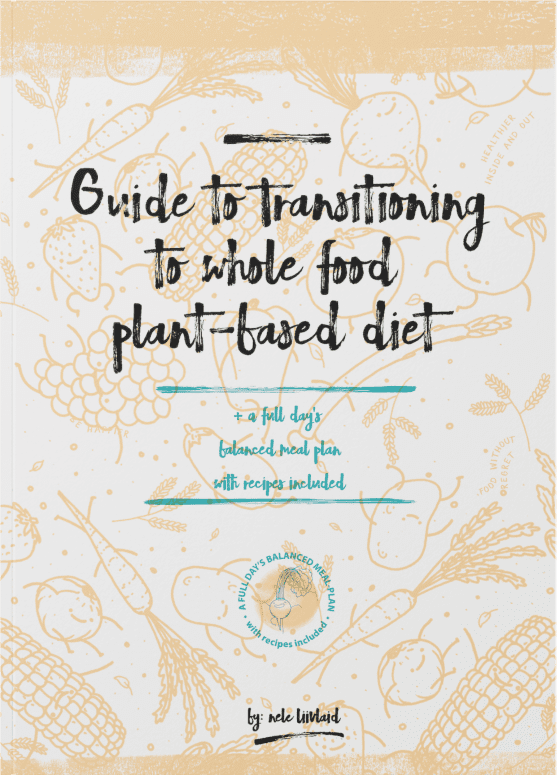Here’s a comprehensive list of vegan pantry staples as well as kitchen utensils/equipment. It’s a long checklist but don’t be intimidated. Take it only as a guideline to give you an idea of the variety of foods on the whole food plant-based diet.
Download my FREE Guide to Whole Food Plant-Based Diet!
Start with what you already have in your kitchen and pantry. If you feel overwhelmed, start with a few different grains, legumes, herbs and spices, dried fruits, nuts and seeds, berries and seasonal fruits and vegetables. Over time, add new items to your menu. Soon you’ll have collected most of the items below or will have at least tried them all.
Check my post How to Compile a Meal Plan for essential food items.
List of Vegan Pantry Staples
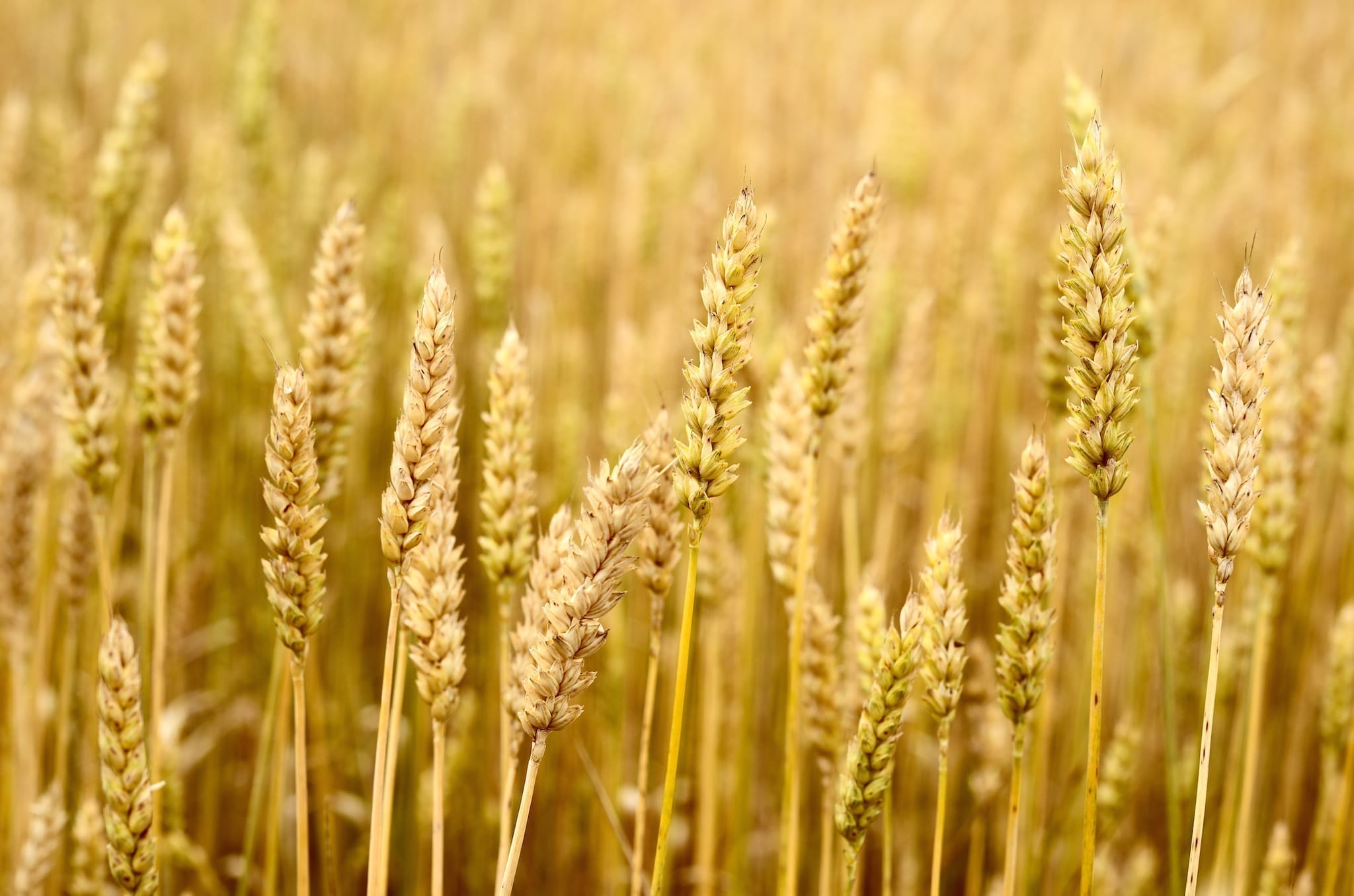
Find below the list of vegan pantry staples for a healthy whole food plant-based cooking. Remember that you absolutely don’t need to have every item in the list! Simply compile your own vegan pantry staples’ list from the ideas below.
Dry Vegan Pantry Staples
Whole grains, pasta and breakfast cereals
Rice (brown, black, red), quinoa, barley, ancient wheat varieties spelt and farro, whole wheat, buckwheat, oats, millet, sorghum (gluten-free), rye and triticale (hybrid of wheat and rye), and products made of those whole grains (pasta, lasagne, noodles, cereals, flours, breads).
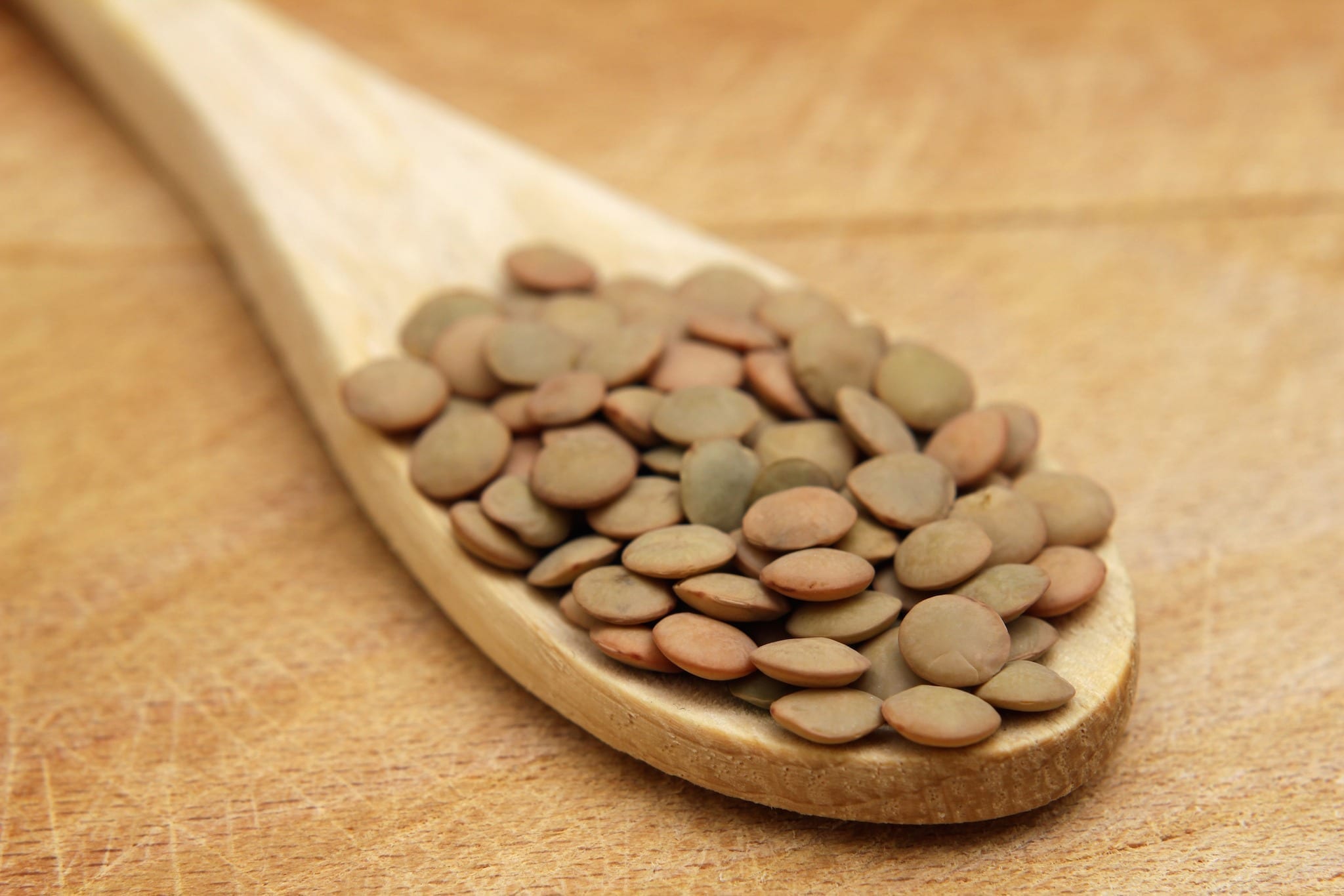
Legumes
Lentils (red, brown, green, black), beans (pinto, white, red, black, kidney, black-eyed etc.), chickpeas. Store them dried and then cook them yourself or buy them in cans and jars. There are also pastas made of lentil flour.
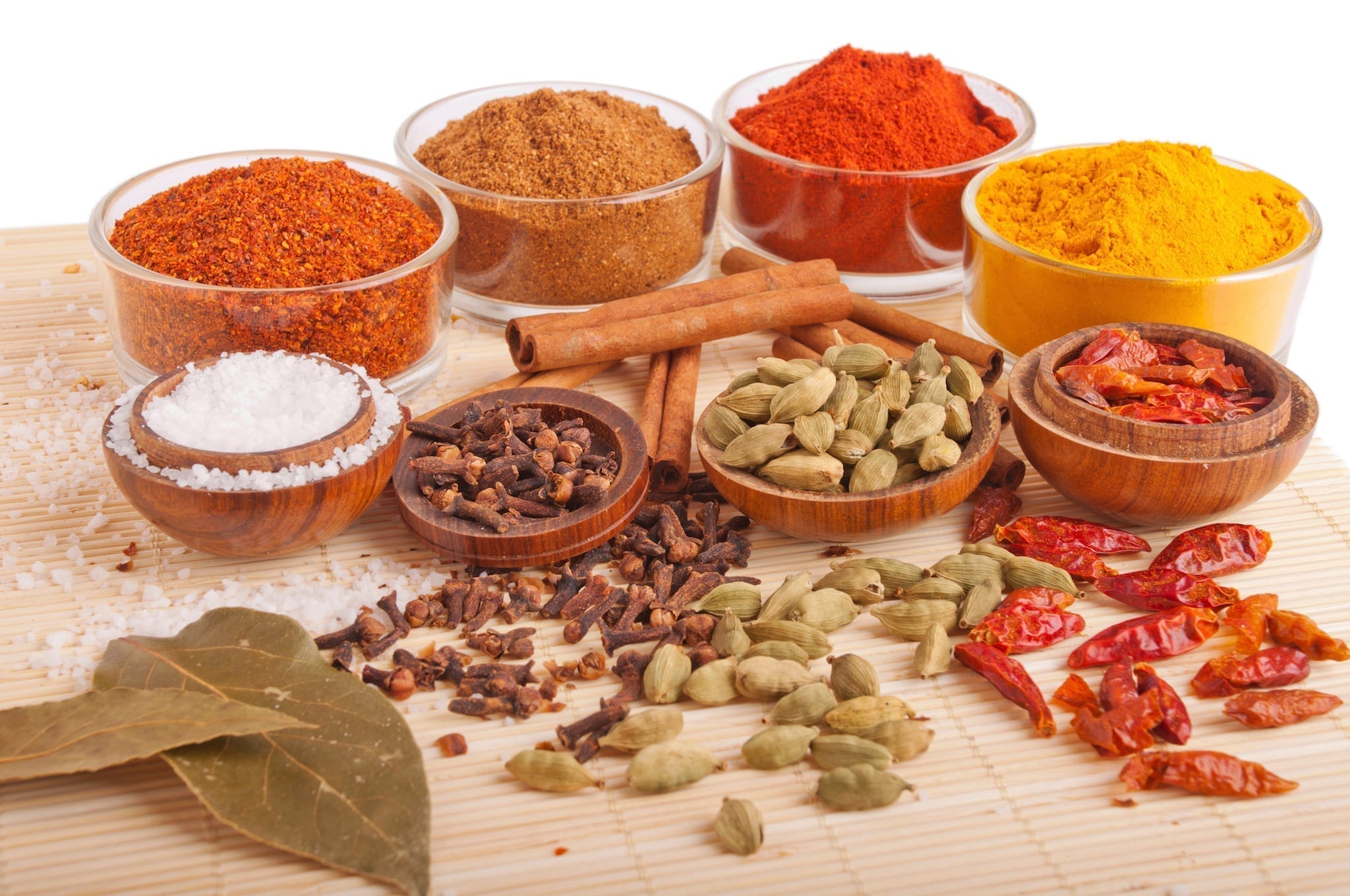
Herbs and spices, dried
This list can be very long, especially if you like Indian food, but the following is a basic stock to start: sea salt, pepper (black, red, white, green), chilli flakes, paprika powder, curry powder or paste, turmeric, garlic powder, onion flakes, bay leaves, oregano, rosemary, thyme, basil, sage, organic vegetable broth powder, caraway seeds, mustard seeds, cinnamon, cardamom, nutmeg, ginger powder.
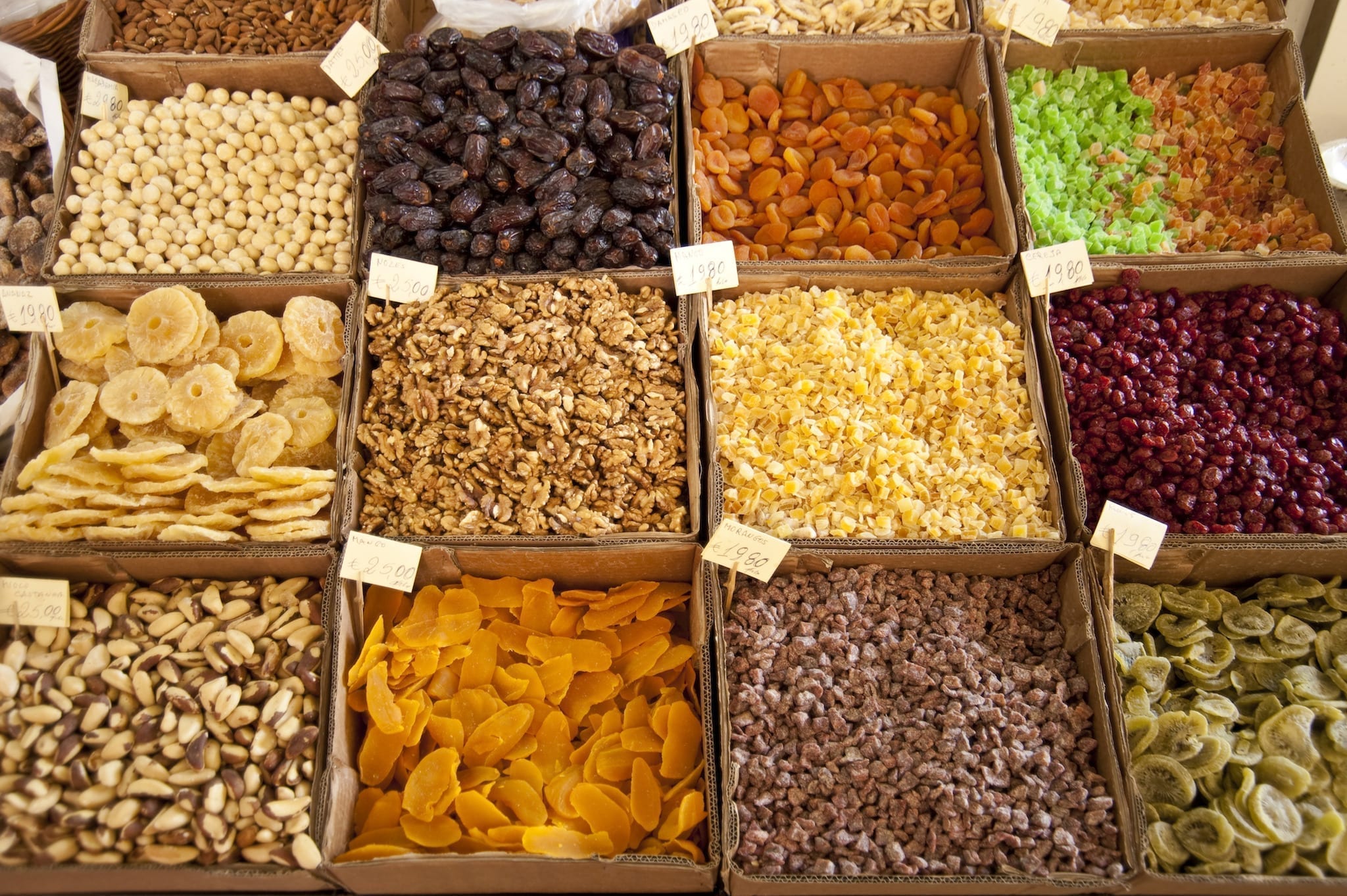
Dried fruits
Prunes, dates, figs, raisins, apricots, goji berries, mulberries.
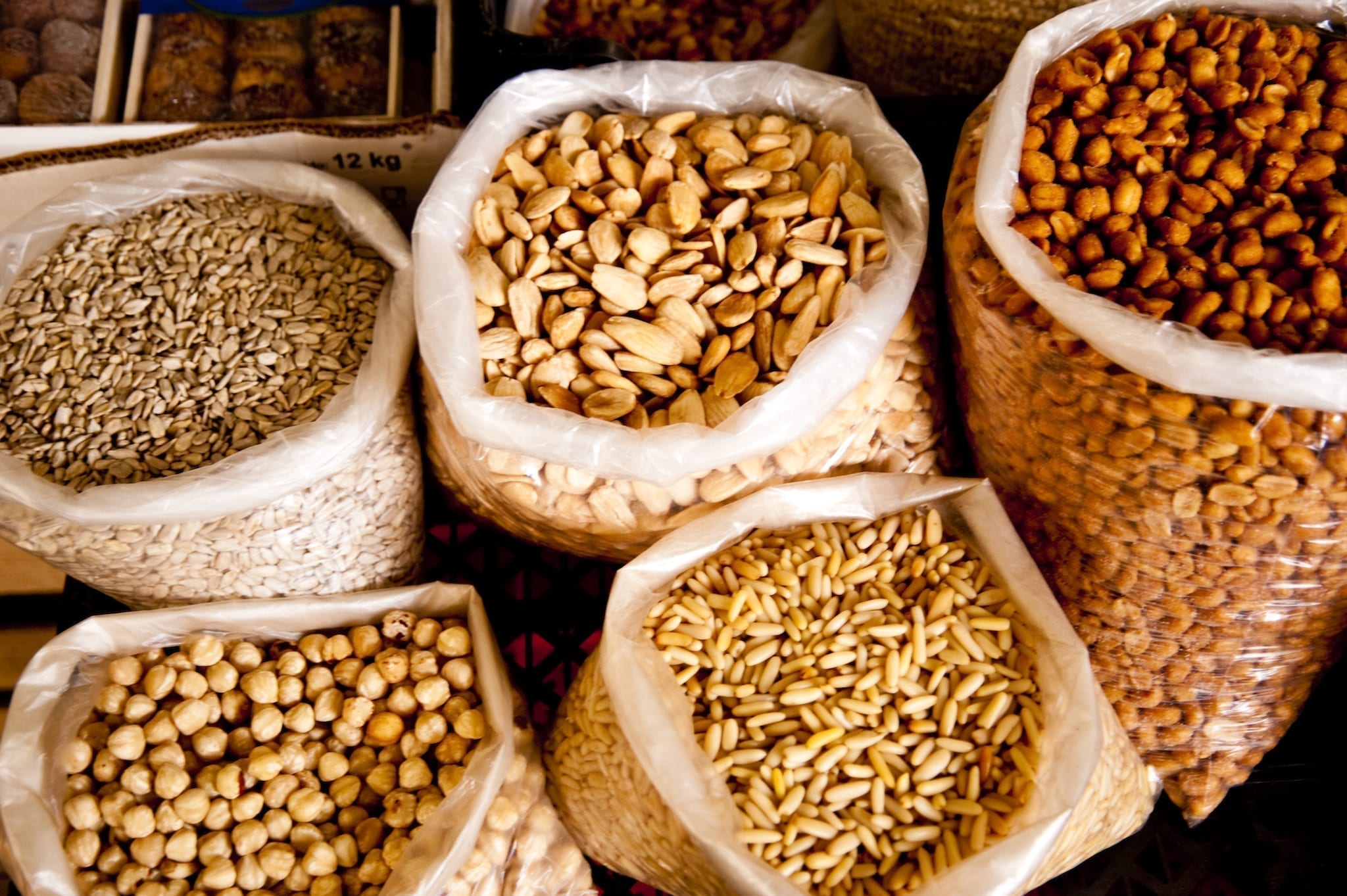
Nuts and seeds
Flax seeds, chia seeds, hemp seeds, sesame seeds, sunflower seeds, pumpkin seeds, poppy seeds, Brazil nuts, walnuts, cashews, hazelnuts, almonds, shredded coconut.
Note: preferably eat nuts, seeds, legumes and grains that have been soaked and rinsed. Soaking makes them more easily digestible, reduces or removes phytic acid (which reduces mineral absorption); releases the enzyme inhibitors that store nutrients while growing and prevents premature germination, and even boost vitamin B content. (1)
Check out Soaking Chart for Nuts, Seeds, Grains and Legumes
Seaweeds
Wakame, kombu, dulse, nori, agar-agar.
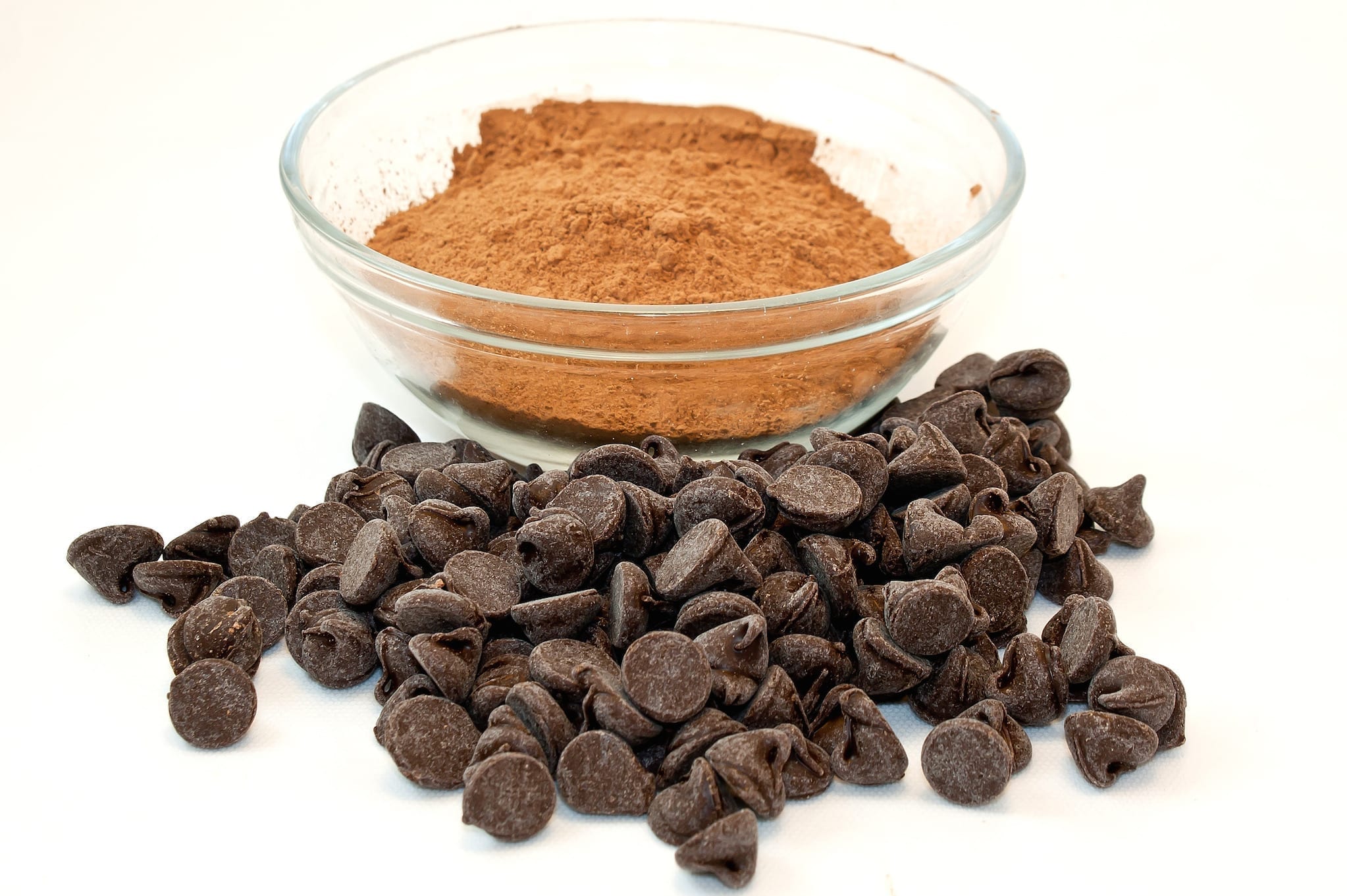
Other
Nutritional yeast, cacao powder, carob powder, dark chocolate (at least 72% cacao content) or cacao paste, balsamic vinegar.
Good for those in transition and for rare treats
Soy sauce (look for one that has a low sodium content), agave syrup, xylitol, stevia.
Fresh Vegan Pantry Staples

Fresh (according to season) or frozen berries
Blueberries, black currants, red currants, cherries, raspberries, strawberries, blackberries.
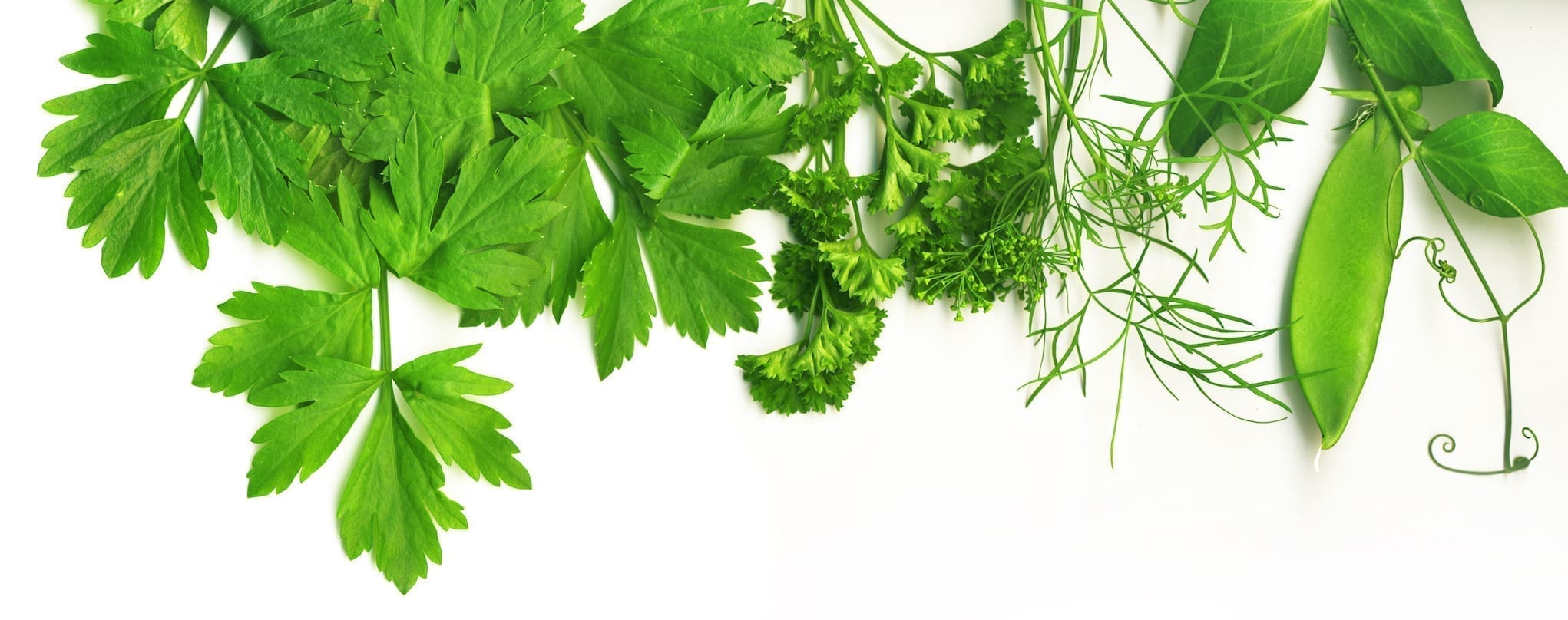
Herbs and spices, fresh
Basil, parsley, coriander, rosemary, mint, thyme, ginger.
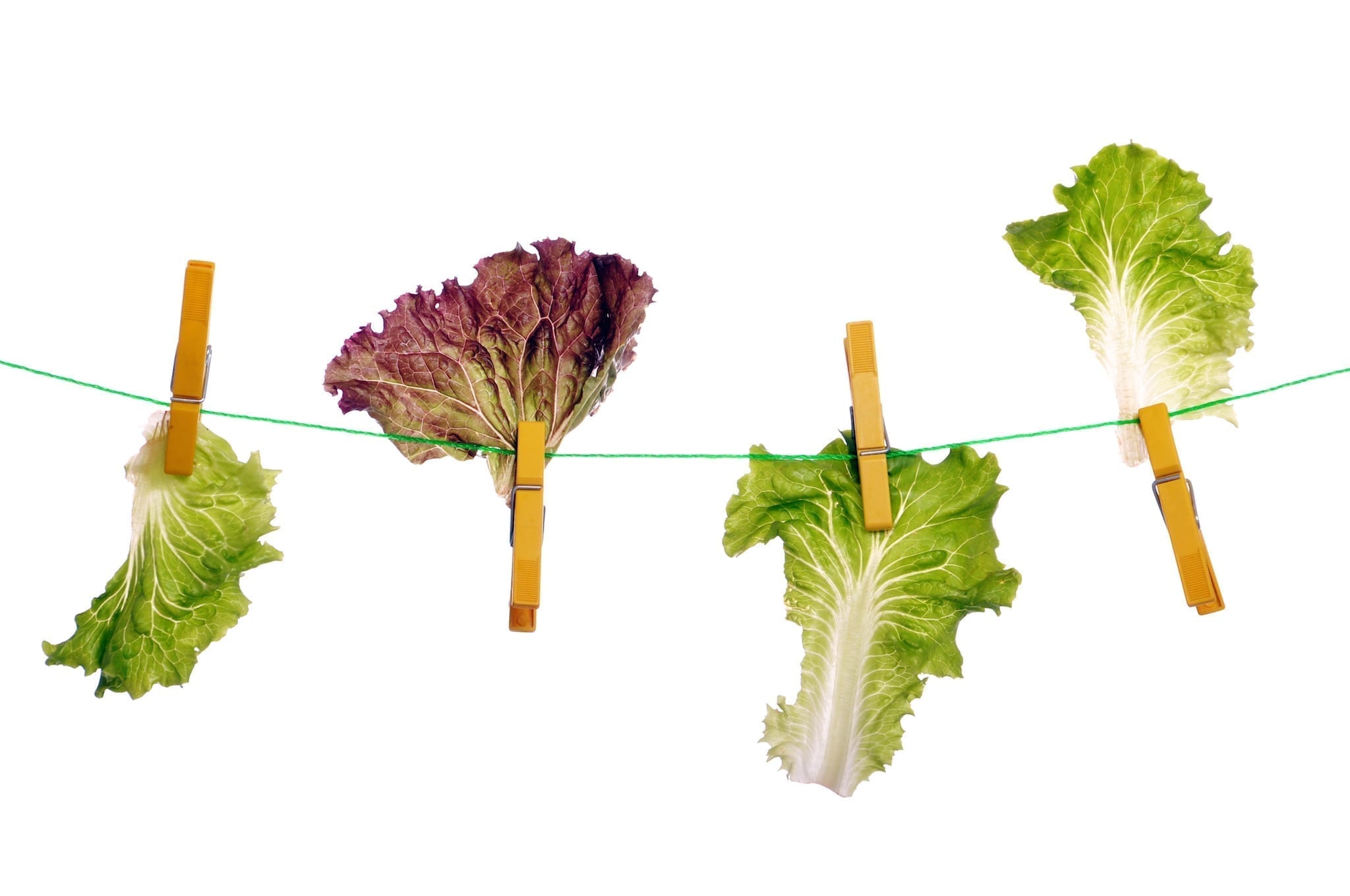
Leafy greens and salads
Romain lettuce, iceberg lettuce, arugula, chard, kale, spinach, bok choy, watercress, radicchio, endive, chicory.
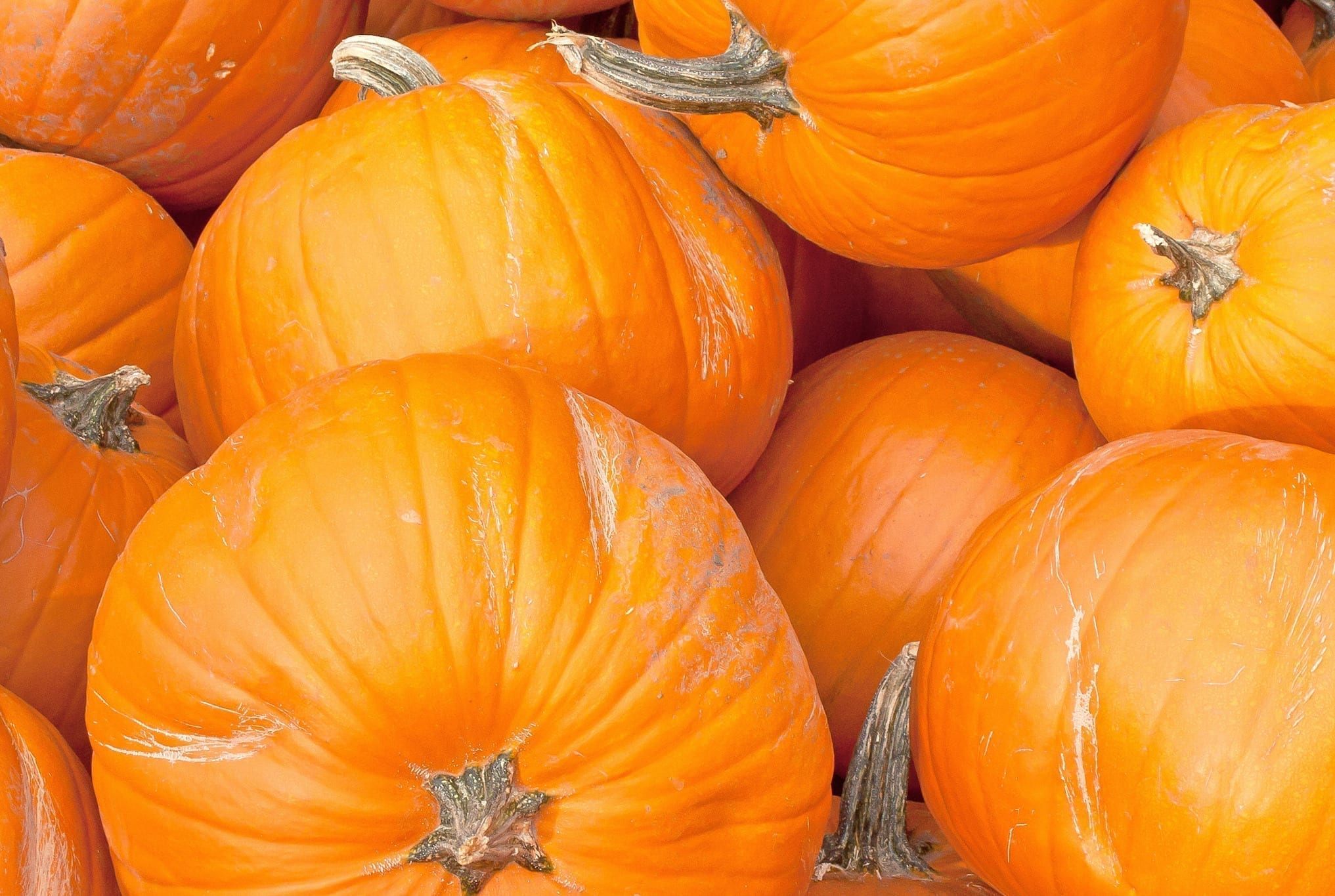
Starchy vegetables
Potatoes, sweet potatoes, parsnips, corn, pumpkin, butternut squash, acorn squash, green peas, plantains.
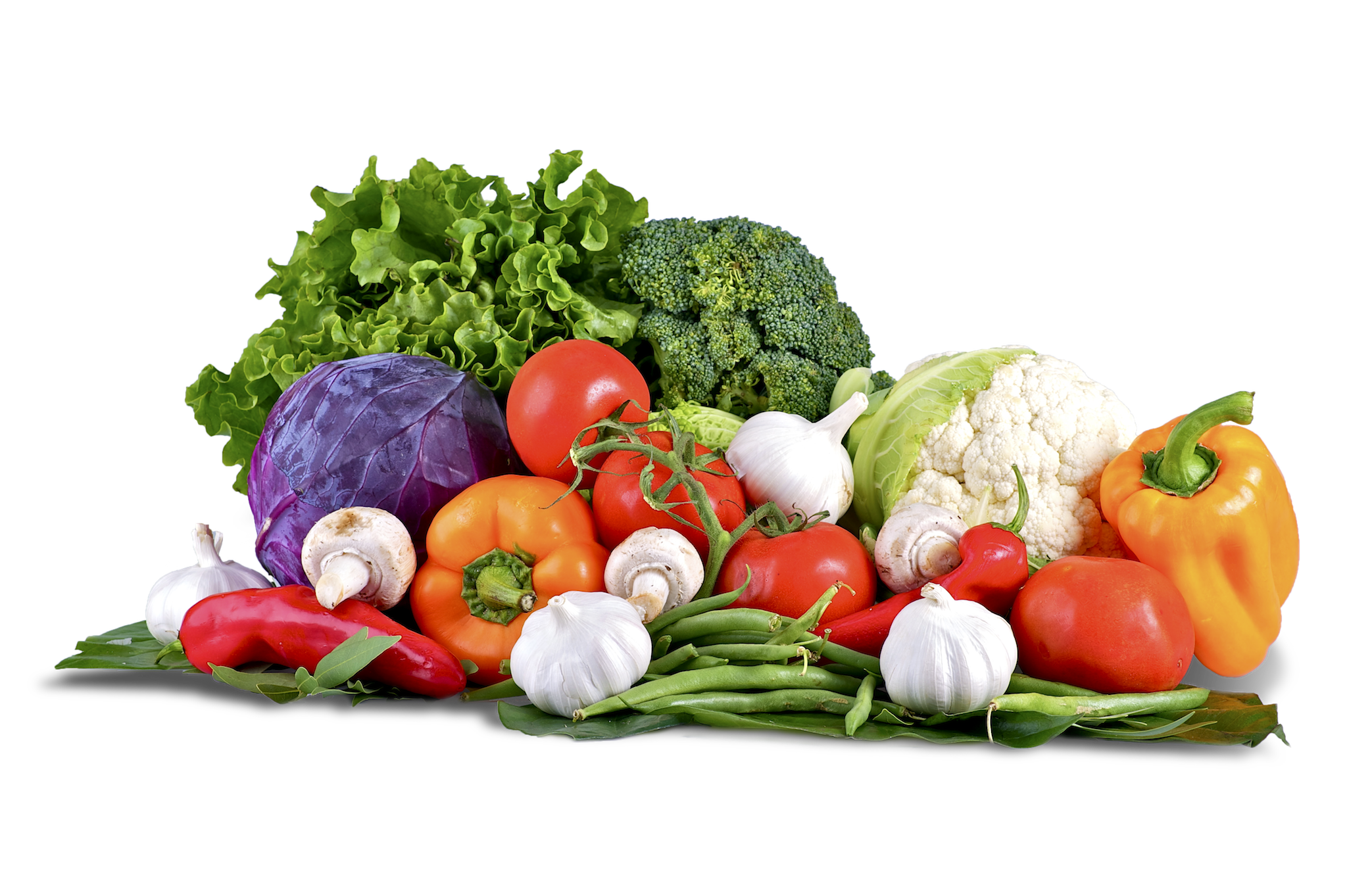
Non-starchy vegetables
Artichokes, beetroot, turnip, carrots, summer squash, bell peppers, tomatoes, leeks, onions, eggplant, cucumber, celery, broccoli, cauliflower, cabbage (green, red, Savoy, Chinese), Brussels sprouts, green beans, asparagus, okra, radishes, sugar snap peas, mushrooms.
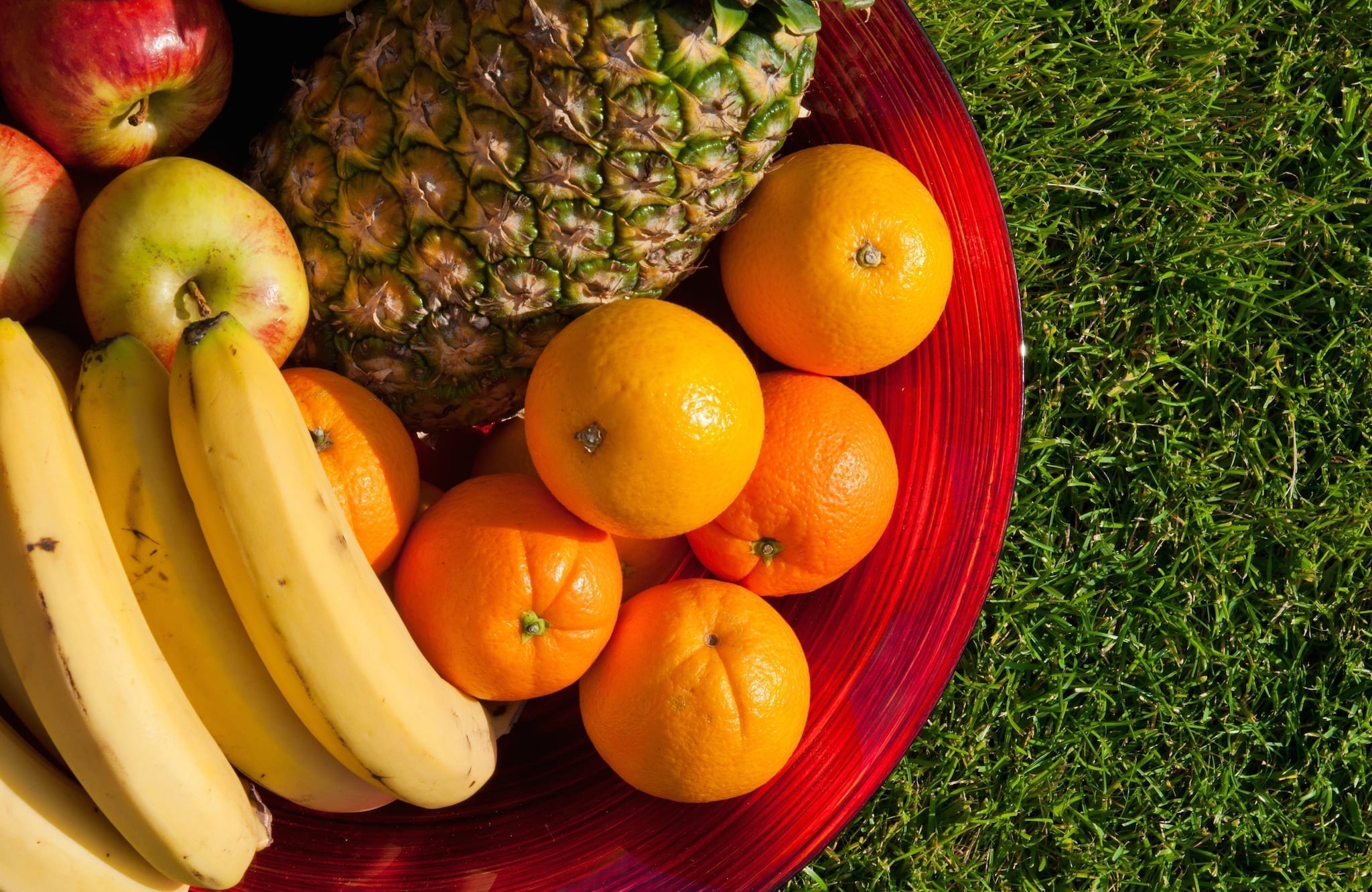
Fruits
Bananas, apples, pears, oranges, mandarins, avocados, lemons, kiwis, olives, persimmons, mangos, grapefruit, watermelon, melon.
Download my FREE Guide to Whole Food Plant-Based Diet!
Vegan Kitchen Equipment
In addition to vegan pantry staples you’ll need to think about the basic kitchen equipment. Of course, you can go crazy with kitchen gadgets and buy a dehydrator, ice cream maker, instant pot, slow cooker, cooling racks, special knives, a pizza stone, nut milk bags and much more but that’s up to you. Below is what I use regularly.
Please check out my Amazon Idea List for the items below.
General Kitchen Equipment for Cooking and Storing
Large skillet with lid – it’s convenient to have one that can also be used in the oven for stews, oven omelettes and pies.
A small pot, a medium-sized pot with a thick bottom and, especially for families, a large pot with a lid for soups, stew, and sauces.
A cast iron or stainless steel pan with a lid for sautéing, pancakes and omelettes.
Knives
Long, sharp chopping knife – This is an essential in plant-based cooking. You’ll being doing a lot of chopping unless you buy pre-cut veggies.
Vegetable and fruit peeler – whenever you need to peel potatoes, sweet potatoes, carrots, apples, or pears, you’ll find the job a lot easier with a peeler.
Smaller sharp knife – use for slicing avocados, mangos, peeling ginger, oranges, and grapefruits.
Ladle – for serving soups, curries and stews.
Spatula – for sautéing, flipping pancakes and stirring stews.
Large and small sieve – to rinse canned legumes, dry lentils, grains and washing berries.
Pasta sieve – for draining different kinds of pastas.
Whisk – for whisking together batters and whipping dressings.
Kitchen scissors – for cutting green onions, lettuce, celery and other herbs.
Cutting board – for cutting vegetables and fruits.
Citrus reamer (or other tool) – to squeeze the juice out of lemons for your morning glass of water.
Containers with lids – for storing food. Prefer BPA-free (always marked accordingly) or glass containers.
Kitchen Electronics
Food processor – You can do without a food processor, but again, it makes your life easier. Use it for grating, slicing, whipping and mixing. With some cake recipes, it’s easier to pre-process the batter in a food processor before placing it into a blender for a smoother texture.
Immersion blender – If you already have a high-speed blender, there’s no immediate need for an immerse one. I do find my immerse blender to be more convenient for things like pureeing soups.
High-speed blender (at least 1100W) – for smoothies, puddings, berry/fruit and banana ice creams and wet mixtures of muffin and brownie recipes. In most cases a blender can be substituted with an immerse blender.
Digital kitchen scale and measuring cups – to measure flours, grains, legumes etc. I prefer my kitchen scale over measuring cups because flour can be measured very differently depending how tightly you pack it in a cup.
Kitchen Utensils for Baking
Rolling pin – to roll out cookie or pizza dough.
Parchment paper – to line bread tins, baking sheets and cake tins.
Bread pan – for baking bread. I strongly suggest baking your own bread if you have time. You’ll never regret making your own loaves and you probably won’t eat much store-bought bread any more.
Cake tin – for brownies and cakes.
Baking sheet – for cookies, patties and oven-baked vegetables.
Please check out my Amazon Idea List for the above items.
I hope you found my list of vegan pantry staples as well as kitchen equipment useful and will now dig into plant-based cooking!
Download my FREE Guide to Whole Food Plant-Based Diet!
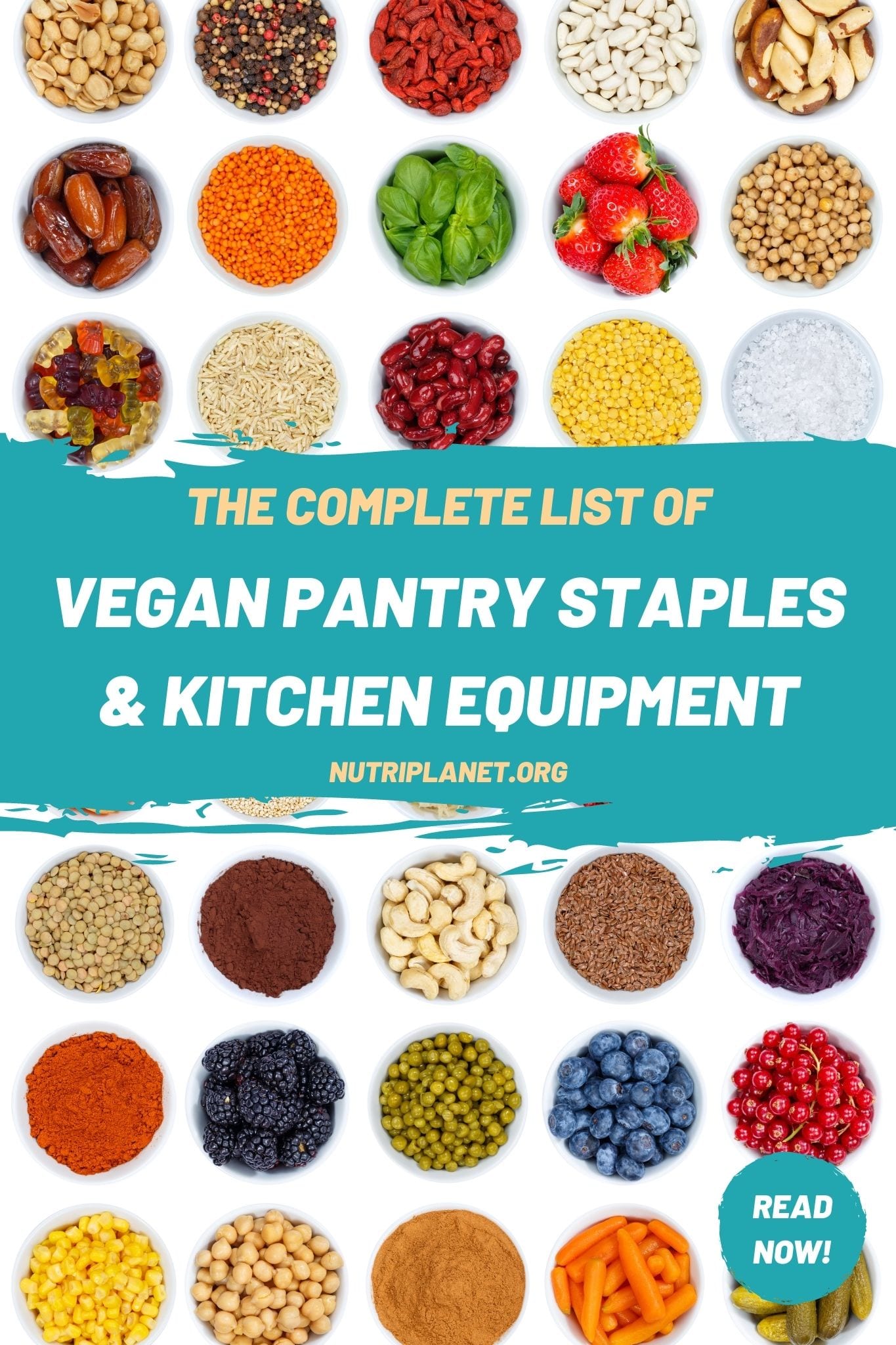
This post is also available in: Spanish

